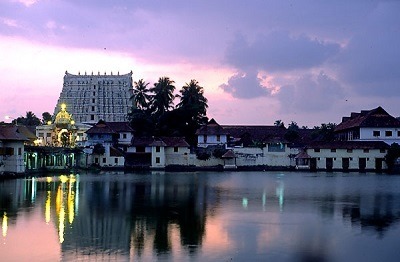On
the previous occasion when we looked at the radio scene in the city of
Trivandrum in South India, we presented the story of their local radio
stations, AM mediumwave and FM. In our
program today, we present the story of their shortwave station which is often
heard in continents afar, such as Australia, North America and Europe,
The name of the city, Trivandrum, is
an English abbreviation of the very long name in Malayalam, the official
language of the Indian state of Kerala.
The Malayalam language is a Dravidian language that was derived from
ancient Tamil with an admixture of the ancient classical Sanskrit language.
The Malayalam language contains 52
letters, consisting of 16 vowels and 36 consonants, which when combined in
various pronunciations produce a total of 576 syllabic characters, making a
total of more than 900 separate glyphs.
The Malayalam language contains the most written characters of any of
the many languages in India.
In 1981, the writing system in the
Malayalam language was officially reduced down to 90 characters, thus
simplifying typesetting and the usage of computers. The name of the southern city in the
Malayalam language is Thiruvananthapuram which when translated into English,
means the City of the Eternal Lord.
It was back in the early 1960s that
the first attempt was made to establish a shortwave transmitter in conjunction
with the already existing mediumwave facility in Trivandrum. However, due to rising tensions with China
which developed into a month long border conflict, the shortwave transmitter
intended for Trivandrum was quickly diverted to Kurseong in West Bengal.
This new 20 kW transmitter was
installed out among the tea estates in the high hill countryside out from
Kurseong and it was officially inaugurated on June 2, 1962. At the time, there was no mediumwave station
in Kurseong, and programming was produced locally and taken on relay from Delhi
and Calcutta. This station operated on
3355 kHz early morning and evening, and on 6100 kHz during the day.
Two years later, All India Radio
announced that a 250 watt transmitter would be installed in Trivandrum and it
would operate on 7280 kHz. However, this
intended plan was never implemented either.
Then twenty years later again, All
India Radio announced that Trivandrum was again under consideration for the
installation of a shortwave transmitter, a project that would be implemented
under the next Five Year Plan. However,
once again, and for the third time, Trivandrum missed out.
However, comes the year 1992, and a
50 W transmitter manufactured by BEL Bangalore Electronics Limited Model HHB144
was actually installed at a coastal location at Muttathura in suburban
Trivandrum, some eight miles from the studios of All India Radio
mediumwave. The transmitter site also
includes an emergency on air studio.
The
shortwave antenna system is readily visible on Google Earth and the three
towers can be seen in close walking distance to the beach, a little south of
the sewage farm which itself is a little south of the jetty. The three self supporting towers are in a
straight line, at an angle of approximately 750 and they are
supporting two simple curtain antennas.
The main coverage area for AIR Trivandrum shortwave is towards the north
from Trivandrum and across to the neighboring island of Sri Lanka.
Test transmissions consisting of
mainly test tones began in October 1992, and two years later on November 6
(1994), the station was taken into a regular schedule of on air service. Currently, shortwave AIR Trivandrum is on the
air morning and evening on 5010 kHz and during the day on 7290 kHz. QSL cards for this shortwave station are
usually processed at the AIR head office in New Delhi.
VoH
Zambia reception report from Trivandrum
(AWR Wavescan)
